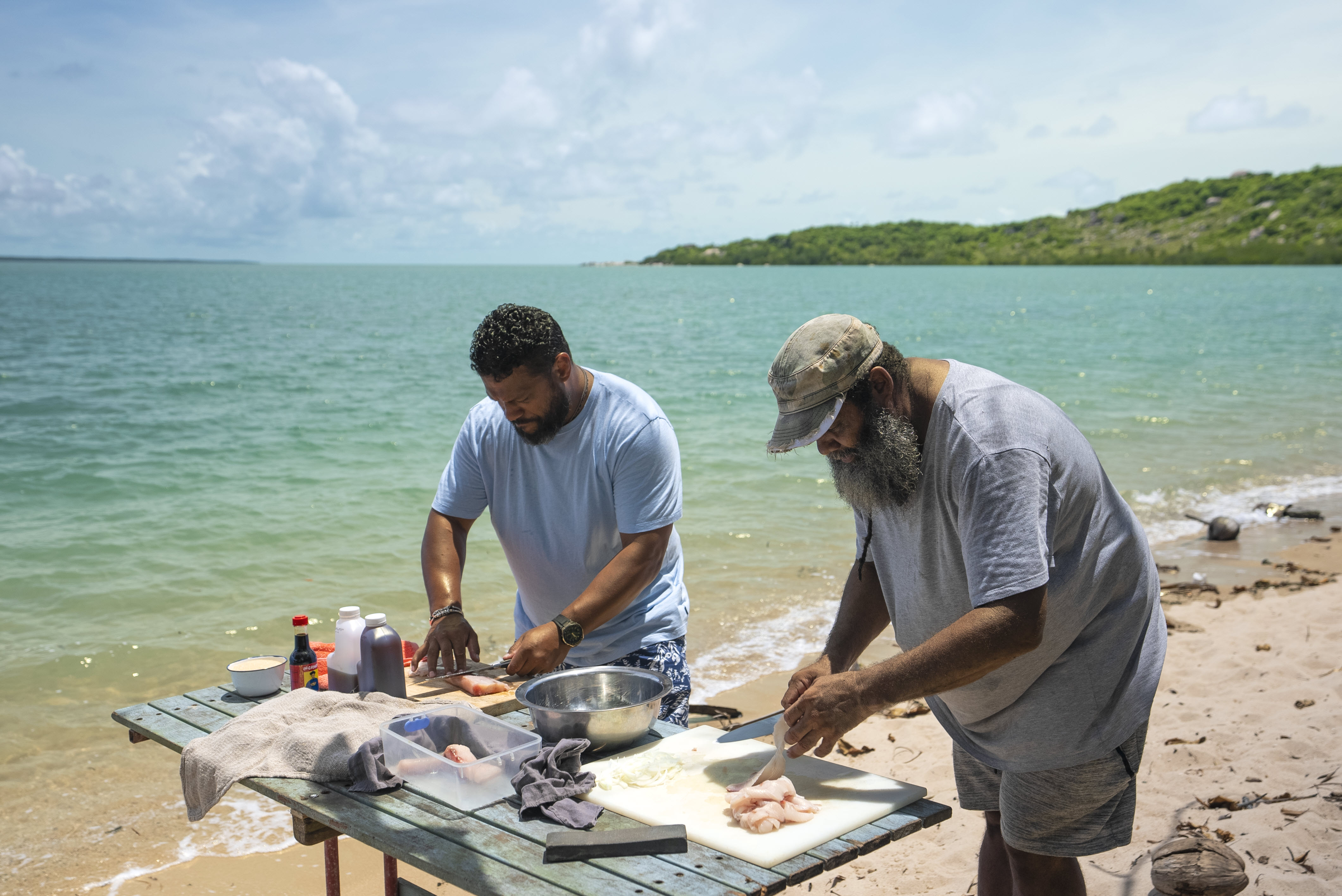--- Watch Aaron Fa'Aoso in Strait to the Plate, 8pm Thursdays on SBS Food, NITV, or stream it free on ---
The famous cured fish dish from Torres Strait Islands, namas, is an ancient meal that promises to fascinate the cultural senses of all who experience it for the first time. That’s because namas hails from the , which has been influenced by the forces of immigration and industry.
For that rather diverse reason alone, it’s worth savouring the cultural backstory of namas with every juicy bite.
The fresh fish used for namas comes from the waters surrounding the Torres Strait Islands, caught via traditional methods of fishing passed down over the generations.
But first, let’s explain what namas is
The traditional Torres Strait dish, namas, consists of cured fish that has been pickled by the juice of an acidic ingredient – think lime or lemon. No heat is needed for cooking. Usually, citrus juice is enough.
The fish used for namas comes from the waters surrounding the Torres Strait Islands, caught via traditional methods of fishing passed down over the generations.
In episode five of on SBS, viewers learn how to create namas. Host of the series, Aaron Fa’aso, meets renowned fisherman and diver, Uncle Tommy, who makes namas for the cameras. To pickle the fish, Uncle Tommy uses both lime and vinegar. Further into the recipe, he adds chilli. Capsaicin, a compound found in all chilli peppers, is highly acidic in nature. Onions are also thrown into the mix – it's another highly acidic ingredient. The ‘cooking’ process is therefore given an extra boost with the addition of chilli and onions.
To pickle the fish, Uncle Tommy uses both lime and vinegar. Further into the recipe, he adds chilli. Capsaicin, a compound found in all chilli peppers, is highly acidic in nature. Onions are also thrown into the mix – it's another highly acidic ingredient. The ‘cooking’ process is therefore given an extra boost with the addition of chilli and onions.

Aaron Fa’aso helps fisherman and diver, Uncle Tommy, to make namas in episode five of Strait to the Plate on SBS. Source: Supplied- Strait to the Plate
The result is a bake-free dish that started out quite soft but ended up nice and firm. Uncle Tommy’s finished product is balanced out with the flavours of ginger, soy sauce and sugar.
Other variations of namas from Torres Strait also include coconut milk – a perfect addition to add silkiness and smoothness to fish.
READ MORE

Namas
Where does ‘namas’ come from?
Namas often gets compared to the Peruvian dish, . It’s fair enough: both dishes feature raw fish pickled by an acidic, citrus juice. A lot of people also know about ceviche – it’s a modern restaurant staple. Despite the similarities, namas’s origins are not found in Latin America.
Although namas is very local, it is also quite regional. When you look at the most popular dishes of the Pacific, it’s clear to note a strong regional love for cured fish. Ika mata is the traditional cured fish dish of the Cook Islands. Similar dishes across the region include kokonda in Fiji, poison cru in Tahiti and oka in Samoa.
What’s even more fascinating is the Japanese influence on namas. Japan, situated in the northwest Pacific Ocean, was a big provider of migrant workers to . It’s believed that the recipe for namas was first inspired by J who came to the islands to work in the region during the late 1800s.
One school of thought suggests that the Japanese divers continued their culinary tradition of eating raw fish (sashimi) as they worked on .
It’s also been said that namas descends from a popular Japanese dish called that's typically eaten as a lucky charm every New Year. The pickled dish consists of thinly sliced, uncooked vegetables and seafood (nama), which are marinated in rice vinegar (su) for hours.
As it turns out, the practice of eating raw fish is not . The tradition made its way to Japan from China during the ).
So does that mean namas is Chinese? The short answer is no. Many traditional dishes from around the world can be traced back to earlier civilisations but that doesn’t make them less local. Take pasta for example: although it may have originated in .
It's the same deal with namas. This cured fish dish is a traditional meal in the Torres Strait Islands. Namas speaks volumes about the ancient fishing methods and cooking culture of its peoples. It also tells a story about the forces of migration that have shaped the Torres Strait Islands over the last few centuries.










